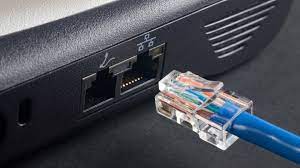Ethernet cables are something we take for granted, yet they are responsible for connecting us to the internet and each other. Undoubtedly, they have become an essential part of our lives. However, there are various types provided by Ethernet Cable Manufacturers, so choosing the right Ethernet cable can determine the speed, reliability, and quality of your internet connection.
This blog will closely examine everything you need to know about Ethernet cables.
Evolution of Ethernet Cables
Ethernet cables have come a long way since their inception in the 1970s. The most common types of Ethernet cables that you will find in use today are Cat5, Cat6, and Cat7. Cat5 is the oldest and most basic of the three.
It has been around since 1995 and is limited to up to 100 Mbps. Cat5e, an improved version of Cat5, can provide up to 1 Gbps speed. On the other hand, Cat6 can transfer data up to 10 Gbps, while Cat7 can provide 40Gbps speed. However, higher speeds may require compatible hardware and an appropriate network environment.
Length of Ethernet Cable
The length of Ethernet cables is also important when selecting the appropriate one. Generally, the length of Ethernet cables ranges from 3 to 100 meters. But it is always recommended that the Ethernet cable’s length not exceed 100 meters, beyond which signal attenuation may occur.
Furthermore, buying an Ethernet cable that is too long may result in signal degradation, increasing the likelihood of poor network performance.
Right Shielding for Ethernet Cables
Another vital factor to consider when choosing the right Ethernet cable is shielding. Shielding is a coating or insulation made of metal that protects the Ethernet cable from external electromagnetic interference.
Shielding minimizes noise or interference in network signals, leading to a more reliable and stable internet connection. A shielded Ethernet cable may cost more, but it is worth the investment, especially in locations like industrial areas where electromagnetic noise is prevalent.
Connectors to Link
Ethernet cables use RJ45 connectors to link devices with each other or to connect to a router or a modem. These connectors vary in size and shape and can support different bandwidths. For instance, Cat6 and Cat7 Ethernet cables can support ten and forty times more bandwidth than Cat5e Ethernet cables.
Therefore, it is important to ensure that the Ethernet cable and connector match the same type and have sufficient bandwidth to avoid performance issues.
Why We Need Ethernet Cables?
Ethernet cables are used to connect devices in a wired network, allowing them to communicate with each other and share resources such as files, printers, and internet connections. Here are some reasons why we need Ethernet cables:
Faster speeds
Ethernet cables can provide faster and more stable internet speeds compared to Wi-Fi. This is especially important for bandwidth-intensive activities like streaming high-quality videos, online gaming, or large file transfers.
Reliable connection
Ethernet cables are less prone to interference and signal loss compared to wireless networks, providing a more reliable and stable connection.
Security
Wired connections are generally considered to be more secure than wireless connections as they are harder to intercept or hack into.
Compatibility
Ethernet cables are widely supported by most devices and operating systems, making them a universal and compatible choice for network connections.
Conclusion:
Ethernet cables are the backbone of today’s internet network. Understanding the differences and the various options available in terms of cable type, length, shielding, and connectors can save you from network connectivity headaches. At the end of the day, it’s all about investing in the right Ethernet cable to enjoy a fast and stable internet connection.




